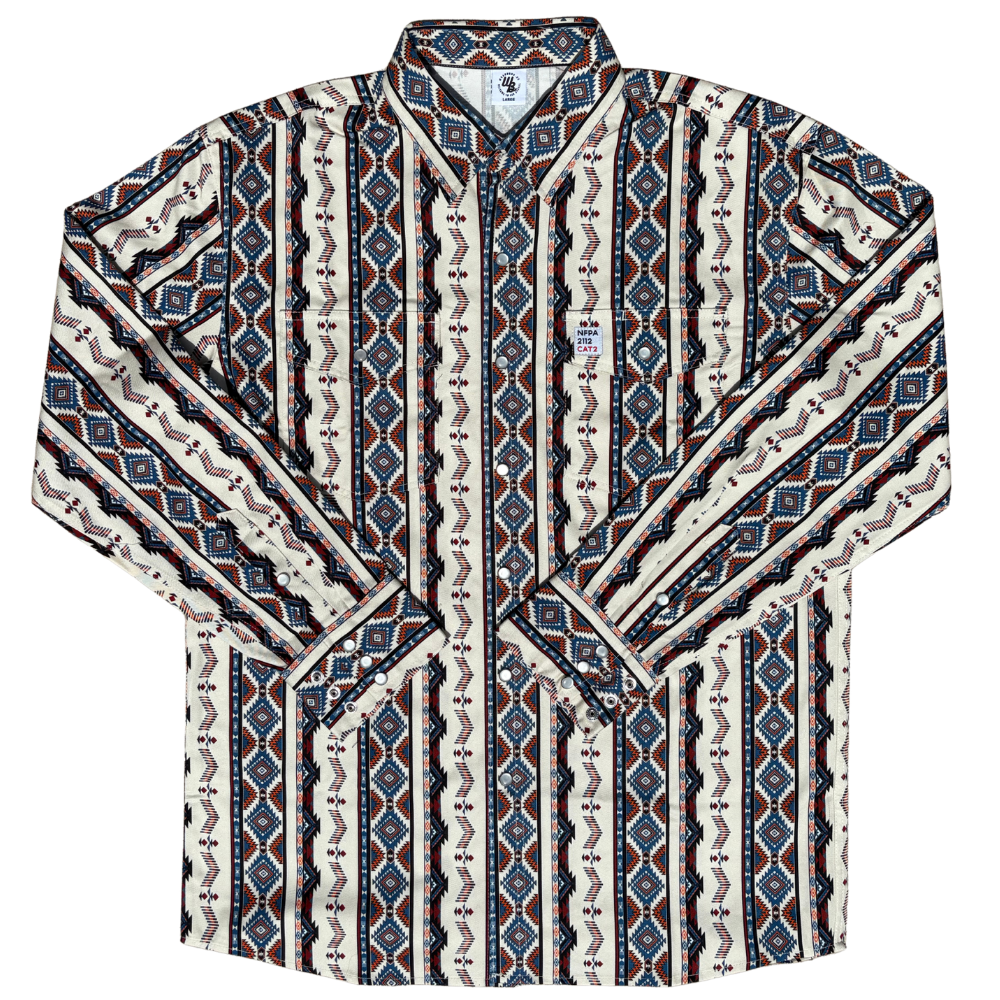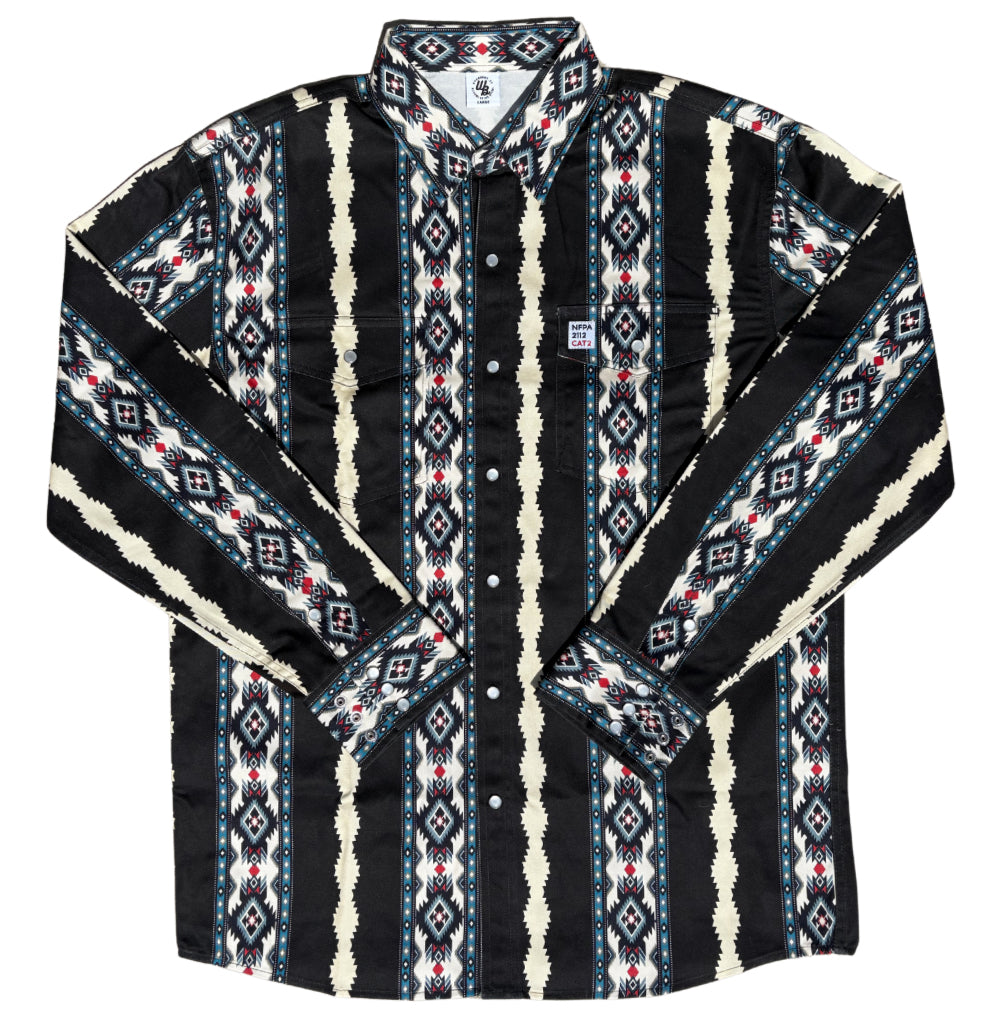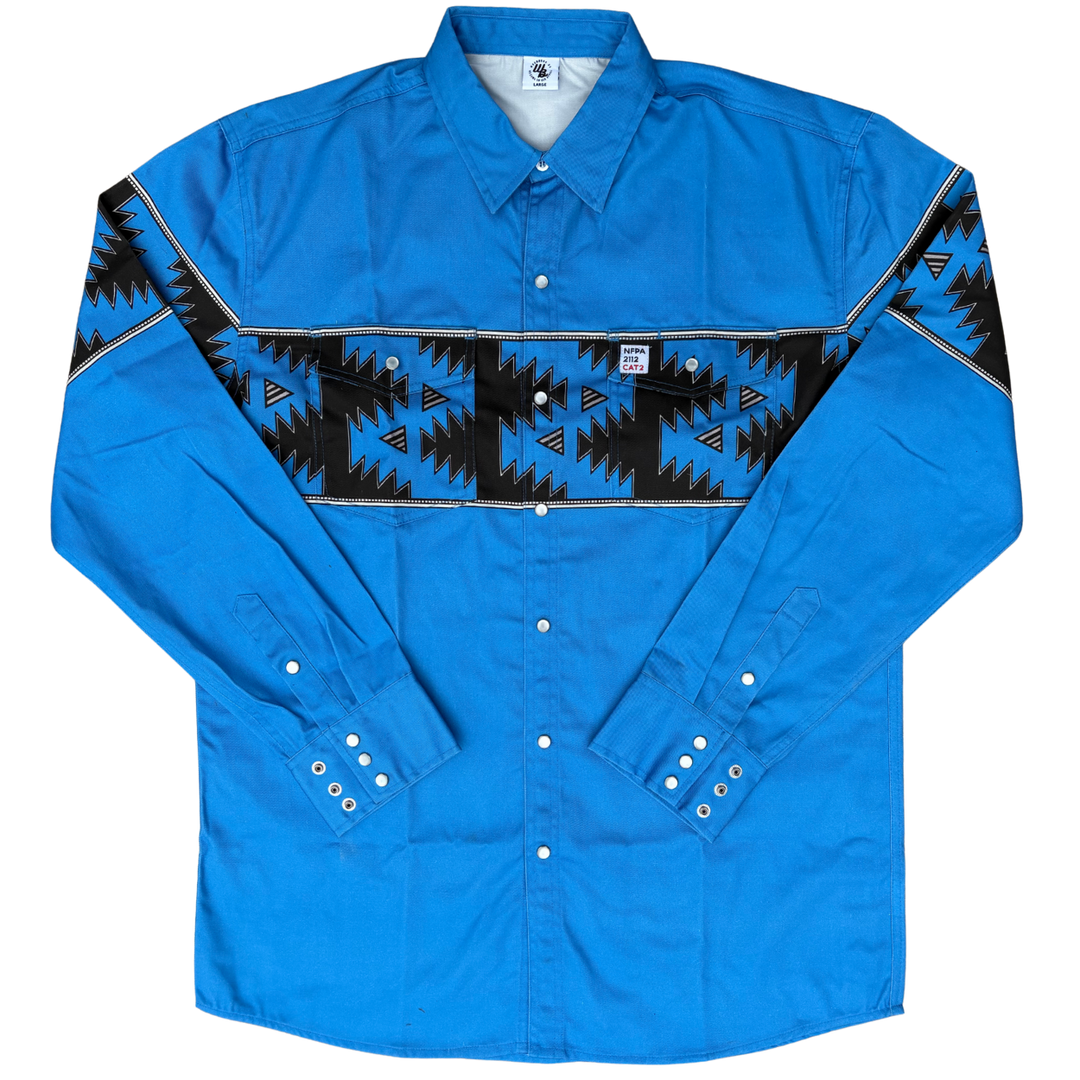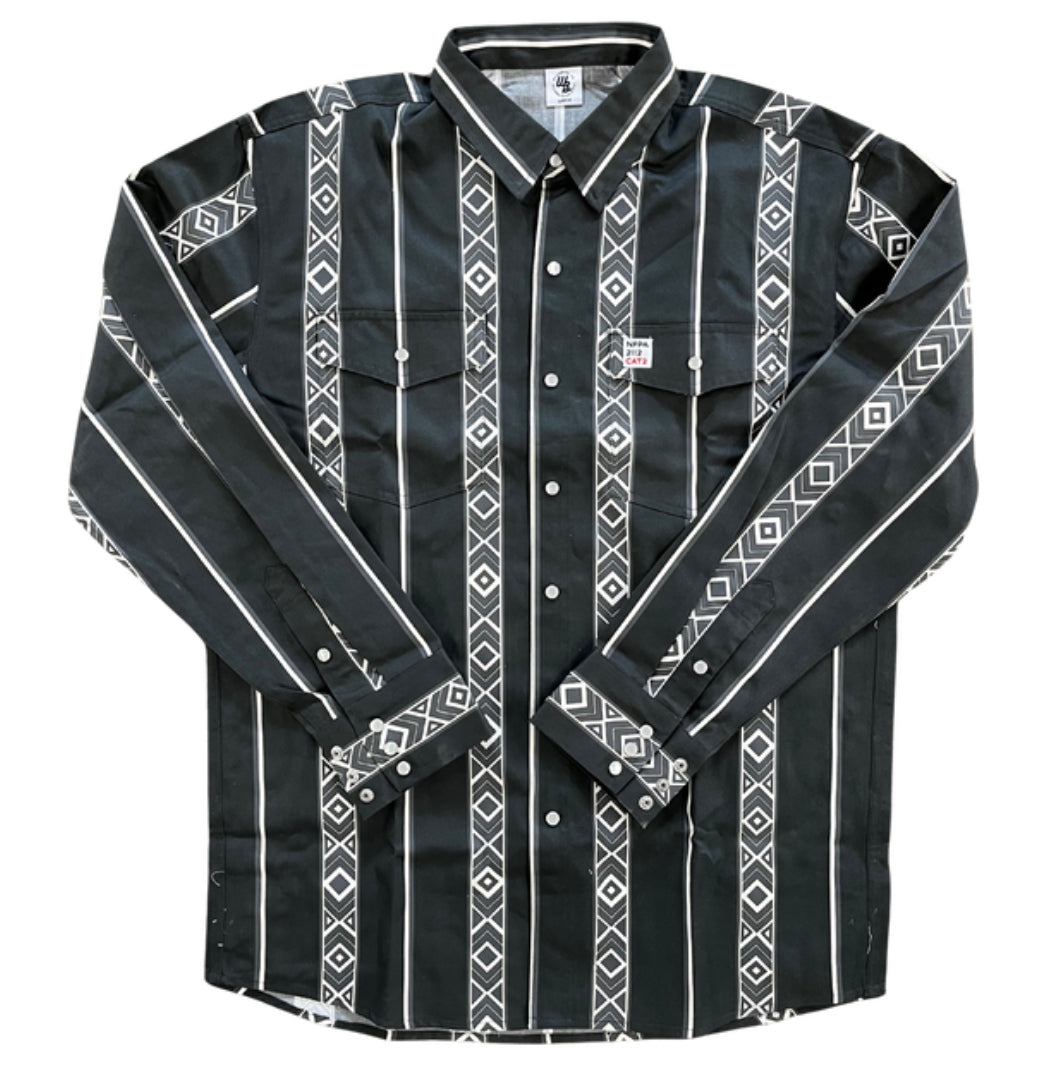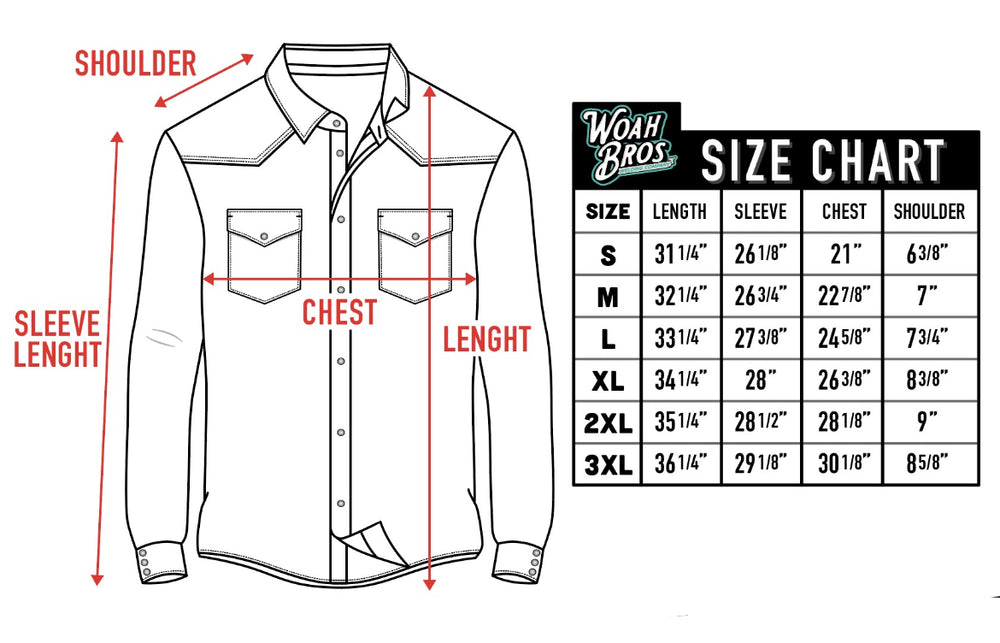Caring for Your FR Shirts: Maintenance Tips for Flame-Resistant Clothing
Caring for Your FR Shirts: Maintenance Tips for Flame-Resistant Clothing
Flame-resistant shirts (often called FR shirts) are essential safety gear for welders and anyone working around flames, sparks, or high heat. These specialized garments can protect you from serious burns – but only if you take proper care of them. Improper washing or maintenance can strip away the very flame-resistant properties that keep you safe. In this guide, we'll cover how to wash, dry, inspect, and store your FR clothing (with a focus on shirts) to maximize its lifespan and ensure it stays protective. Keep these tips in mind so your FR shirts remain as effective as the day you bought them.
Proper Washing: Clean FR Shirts After Each Use
One of the most important aspects of FR clothing care is how you wash it. Wash your FR shirt after every use, especially after heavy work days, to remove flammable contaminants like grease, oil, or chemicals that may have soaked into the fabric. Leftover oils or dirt can ignite in an accident, so keeping the garment clean is key to it doing its job.
When laundering flame-resistant shirts, follow these guidelines:
-
Use a mild detergent: Choose a gentle, non-ionic detergent without any bleach or chlorine. Harsh chemicals, chlorine bleach, or hydrogen peroxide additives can damage the flame-resistant treatment of the fabric. In fact, using bleach on treated FR cotton can essentially strip away its protective properties. Always opt for detergents that say they do not contain bleach or fabric softener.
-
Avoid fabric softeners and dryer sheets: Fabric softeners may leave a flammable residue or film on FR clothing that reduces its effectiveness. For the same reason, skip the dryer sheets – they can deposit chemicals that weaken the garment's flame resistance.
-
Wash separately from regular laundry: Whenever possible, wash your FR shirts separately from your everyday clothes. This prevents cross-contamination from lint or non-FR fibers and avoids damage from zippers or hardware on other garments. It also ensures that no flammable lint or residue from non-FR items gets on your protective clothing.
-
Use the right water temperature: Check the shirt’s care label for recommended water temperature. Many FR manufacturers suggest washing in warm water (around 140°F/60°C) rather than hot. Warm water is effective at cleaning grime and oils without overly shrinking or stressing the fabric. Avoid hot water, which can cause additional shrinkage or could begin to break down flame-retardant treatments. Cold water can be used if specified by the maker, but ensure it still adequately removes soils.
-
Do not use chlorine bleach or strong alkalis: This is worth repeating – bleach is a big no-no for FR clothing. Even “bleach alternative” detergents can erode the protective qualities of the fabric. Rasco FR, a leading FR clothing brand, warns that laundering FR garments with bleach or other harsh chemicals will reduce their flame-resistant properties, especially for chemically treated fabrics. Always stick to the mildest cleaning agents to preserve your shirt’s FR performance.
Lastly, always follow the care instructions on your shirt’s label. Manufacturers test their fabrics and provide specific laundering guidelines. Following those instructions will ensure your FR shirt stays as protective as the day you bought it. If the label says no fabric softener or has a maximum wash temperature, heed those warnings. Proper washing not only cleans your gear but also preserves its life-saving features.
Safe Drying: Air-Dry or Low Heat Only
How you dry your FR shirts is just as important as how you wash them. High heat is the enemy of flame-resistant fabrics. Excessive dryer temperatures can damage the fire-resistant coatings or fibers and cause the garment to shrink or become less protective. To avoid this:
-
Air dry whenever possible: The safest method is to hang your FR shirts to air dry. This completely avoids any heat damage from a dryer. While air-drying might take longer, it puts zero stress on the fabric and helps maintain the shirt’s integrity. Plus, you save energy and avoid any unintended shrinkage.
-
Use low heat if using a dryer: If you need to machine dry your flame-resistant clothing, use the lowest heat setting on the dryer. Tumble drying on low (around 140°F or 60°C) is typically recommended to prevent damage. Never use high heat or the "hot" setting. High dryer temperatures can not only shrink your shirt a size or two (making it no longer fit properly), but can also degrade its flame-resistant properties. It’s a good rule of thumb that if an FR shirt has shrunk so much that it no longer fully covers you, it’s no longer providing full protection either.
-
Avoid over-drying: Even on low heat, try to remove the shirt as soon as it’s dry. Over-baking the fabric in a dryer can dull the protective finish. Many experts suggest drying only until just dry or even slightly damp, then hanging to finish air drying.
-
Ironing with caution: Generally, you should try to avoid ironing FR garments because the high heat of an iron can also damage flame-resistant fibers. Most FR shirts are made from cotton blends that don’t wrinkle excessively if hung properly. If you must remove wrinkles, use the lowest iron setting and no steam, and avoid any emblazoned reflective strips or patches. Always check if the manufacturer allows ironing – some may advise against it altogether.
By air-drying or using low heat, you’ll prevent unnecessary deterioration of the fabric. Remember, the goal is to maintain the shirt’s protective qualities, and avoiding high heat is crucial to that end. It might take a bit more time, but preserving your safety gear is well worth it.
Regular Inspection and When to Replace
No piece of workwear lasts forever – and that’s especially true for FR shirts that see heavy use. It’s critical to inspect your flame-resistant shirts regularly for signs of wear or damage. Even a small flaw can compromise the protection it offers. Make it a habit to give your FR shirt a quick once-over each time you launder it or at least once a week:
-
Check for holes, tears or rips: Pay close attention to high-wear areas like the sleeves, shoulders, and front. Even minor holes or frayed seams can significantly reduce protection, since fire can reach your skin through even a pinhole. If you find a tear, do not wear the shirt until it’s properly repaired with flame-resistant materials, or retire it altogether.
-
Look for thinning or worn-out fabric: Over time, repeated wearing and washing can make the material threadbare or thin, especially at elbows or collar/cuff edges. Thinning fabric means less insulation against heat. If the material is noticeably thinner or the weave is wearing out, it may no longer provide adequate defense and should be replaced.
-
Inspect for stubborn stains or oil spots: If your shirt has grease, oil, or chemical stains that won’t wash out, be cautious. Flammable substances embedded in the fabric can ignite even if the fabric itself is FR. A shirt soaked in oil is a hazard; if you can’t properly decontaminate it, remove that shirt from service. (For heavy contamination, some manufacturers recommend professional laundering or even disposal of the garment.)
-
Test functionality of closures and seams: Make sure snaps, buttons or zippers are intact (a gaping front due to a broken zipper reduces coverage). Also check that reflective strips or any specialty FR sewing is still securely attached, as those components are also fire-resistant and part of the garment’s protective design.
If you discover any of the above issues and they can't be easily fixed according to the manufacturer’s standards, it's time to retire the shirt. Safety should always come first – do not keep wearing a compromised FR shirt "just to get more use out of it." The cost of replacement is trivial compared to the risk of injury.
So, when should you replace an FR shirt? A good rule is: whenever its integrity is in doubt. This might be after an incident (exposure to a flash fire or arc flash), or simply after years of wear and tear. Most flame-resistant clothing, if cared for well, will last anywhere from 1 to 5 years in normal use. The actual lifespan depends on the fabric, how often you wear and wash it, and how harsh your work conditions are. Heavy daily use in a high-heat, high-soil environment will shorten the garment's life, whereas occasional use in lighter conditions will extend it.
Keep records of your FR shirts’ service life if possible. It’s a great practice to mark the date when you first started using a shirt or to log how many wash cycles it has been through. Some companies have policies like replacing FR garments after a certain number of washes (e.g. 50 washes) or after a set duration of service, even if no visible damage, as a precaution. While you as an individual may not count washes, being mindful of how old your gear is will help you judge when it’s nearing the end of its useful life. Remember, an FR shirt’s protective ability can diminish over time – when in doubt, replace it.
Storage and Rotation: Extend the Life of Your FR Clothing
How you store your FR shirts between uses can also affect their longevity and performance. Improper storage can introduce contaminants or cause premature degradation of the fabric. Follow these storage best practices:
-
Store in a cool, dry place: Make sure your FR garments are kept in a clean, dry environment, away from moisture, when not in use. Damp basements or humid lockers can lead to mildew or weakening of fibers. Ideally, hang or fold them in a well-ventilated closet or locker.
-
Keep away from direct sunlight: Ultraviolet (UV) rays from sunlight can slowly degrade certain flame-resistant fabrics (especially those with treatments) over time. Store your shirts out of prolonged direct sun – for example, don’t leave them hanging in the back of an open truck or near a window for days. A dark closet or opaque storage bin is best for maintaining fabric strength.
-
Avoid chemical exposure in storage: Do not store FR clothing in places where they might come into contact with chemicals, solvents, fuel, or oils. For instance, keeping your work shirts on the same shelf as cleaning solvents or in a locker with leaking oil cans is asking for trouble. The fabrics can absorb these substances and lose their flame resistance or become flammable due to contamination. Always ensure your FR shirt is clean before storing it – a dirty FR shirt left sitting with oil on it is a hazard.
-
Fold or hang properly: You can fold FR shirts neatly or hang them on padded hangers. Hanging can help avoid creases and makes it easy to inspect them. If folding, make sure they are fully dry and clean to prevent any damp spots from fostering mildew.
Another tip for prolonging garment life is to rotate your FR shirts. If you have more than one, try not to wear the same shirt every single day. Rotating garments can help distribute wear and tear and extend the life of each piece. For example, if you have three FR shirts and you alternate them throughout the week, each shirt gets a couple of days to “rest” between uses. This not only gives you time to properly launder and air them out, but it also means no one shirt gets excessively worn out in a short period. Workwear experts note that providing multiple sets of FR clothing for workers and rotating them regularly reduces the stress on any single garment. The result is all your shirts will last longer than if one was used exclusively.
Follow the manufacturer’s guidelines for storage too, if provided. Some FR products might come with special instructions (for example, certain high-visibility FR gear should not be stored in extreme temperatures). But in general, clean, dry, and dark storage conditions are universally beneficial for protective fabrics.
By storing your FR shirts properly and rotating their use, you’ll get more life out of them and ensure they’re in optimal condition each time you put them on.
Conclusion: Long-Lasting Protection and a Smart Investment
Caring for your flame-resistant shirts might require a bit of extra effort, but it pays off with long-lasting protection. By washing them correctly (with mild detergent and no bleach), drying them gently, checking for damage often, and storing them wisely, you’ll preserve their fire-resistant qualities for as long as possible. Remember that your FR clothing is an investment in your safety – taking a few minutes to care for it after each wear is far easier than dealing with an injury because your gear didn’t perform when it should.
At WoahBros, we understand how crucial durable, high-quality FR apparel is for welders and other professionals. Our FR shirts are designed to not only meet stringent safety standards but also to stand up to the daily grind of the job. By following the care tips above, you can make sure your WoahBros flame-resistant shirts last longer and keep you safer every day on the work site. And when it is time to retire an old shirt or you’re looking to add another into your rotation, we’ve got you covered with a range of stylish, tough FR welding shirts to choose from. Protecting yourself is non-negotiable – and with proper care of your FR clothing, you’ll be getting maximum value and safety out of each garment.
Stay safe, keep your FR shirts in top shape, and you’ll be ready for whatever the job throws at you!
Keywords: flame-resistant clothing care, FR shirt maintenance, how to wash FR shirts, fire-resistant workwear, welding shirt care, prolong FR garment life, flame retardant clothing, safety gear for welders, FR garment inspection, store FR clothing.




